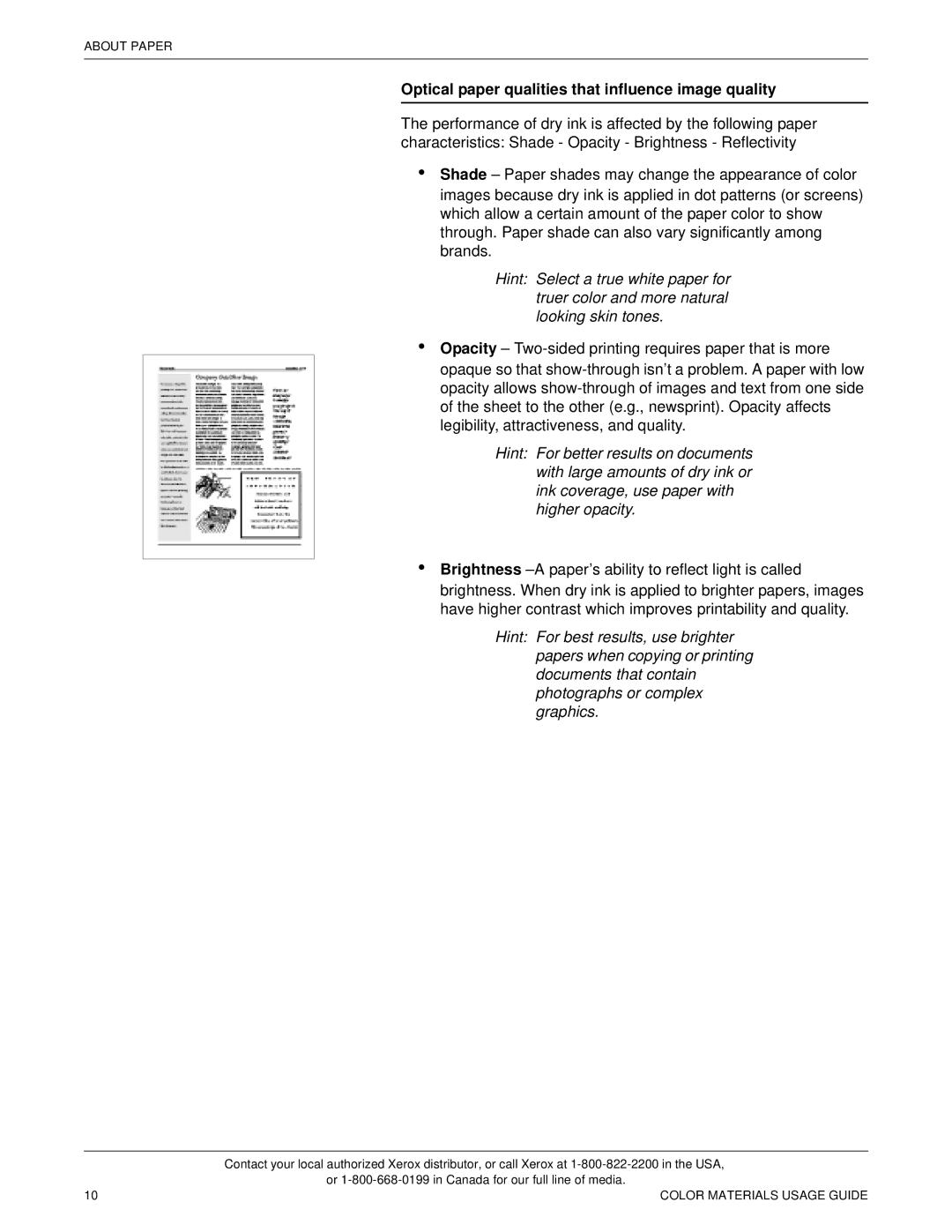
ABOUT PAPER
Optical paper qualities that influence image quality
The performance of dry ink is affected by the following paper characteristics: Shade - Opacity - Brightness - Reflectivity
•Shade – Paper shades may change the appearance of color images because dry ink is applied in dot patterns (or screens) which allow a certain amount of the paper color to show through. Paper shade can also vary significantly among brands.
Hint: Select a true white paper for truer color and more natural looking skin tones.
•Opacity –
Hint: For better results on documents with large amounts of dry ink or ink coverage, use paper with higher opacity.
•Brightness
Hint: For best results, use brighter papers when copying or printing documents that contain photographs or complex graphics.
| Contact your local authorized Xerox distributor, or call Xerox at |
| or |
10 | COLOR MATERIALS USAGE GUIDE |
